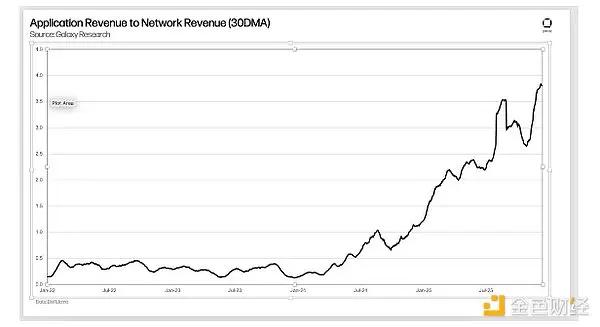Author: Matt·Hougan, Chief Investment Officer of Bitwise; Compiled by 0xjs@Jinse Finance
In July 2024, I wrote an investment memo titled "Short-term Pain, Long-term Gain".
At the time, the cryptocurrency market was in a difficult situation. Bitcoin had reached a peak of over $73,000 in March 2024, but then fell to around $55,000, a 24% correction. Ethereum fell 27% over the same period.
I wrote that the cryptocurrency market was facing a peculiar situation, where all the short-term news was negative, but all the long-term news was positive.
On the positive side, I saw factors such as inflows into exchange-traded funds (ETFs), the Bitcoin halving, and a shift in Washington's attitude as long-term positives. On the negative side, I saw short-term challenges like the Mt. Gox Bitcoin distribution and the German government's sale of Bit.
I concluded that the difference between short-term negatives and long-term positives created a great potential opportunity for long-term investors.
It turned out that this assessment was quite prescient. Shortly after I wrote the memo, Bit bottomed out and then soared to $100,000.
The current market landscape is very similar, with short-term negatives and long-term positives competing. For investors with a long enough time horizon, I believe this presents a very similar opportunity.
Bad News: The End of the MEME Coin Craze
First, let's look at the bad news.
As I write this memo on the morning of February 25th, the cryptocurrency market is experiencing a significant sell-off. Bit is down 8%, trading below $90,000, Ethereum is down 10%, and Solana is down 12%.
The immediate trigger is the fallout from a hacking attack on the Singapore-based cryptocurrency exchange Bybit over the weekend. Hackers used a classic phishing scam to steal $1.5 billion worth of Ethereum from the exchange. Although Bybit (impressively) was able to use its own funds to make all customers whole, the Bybit hack still shook the cryptocurrency market and triggered a cascade of liquidations.
However, the Bybit hack is not an isolated incident. In recent weeks, there have been a series of scams related to MEME coins, including:
Libra: Argentine President and cryptocurrency enthusiast Javier Milei had endorsed a MEME coin called Libra, which turned out to be a multi-billion dollar fraud.
Melania: A MEME coin related to First Lady Melania Trump also met a similar fate, costing investors billions.
Trump: To a lesser degree, a MEME coin related to former President Trump also experienced a similar situation.
Reports suggest the Bybit hackers may be associated with the North Korean government, and they were attempting to launder the stolen Ethereum through MEME coin platforms. The Bybit scam also had MEME coin-related elements, and regulatory investigations are likely to follow.
Taken together, these events may signal the end of the recent MEME coin craze.
While this may be a relief for "serious" cryptocurrency investors, MEME coins have been the hottest sector in the cryptocurrency space outside of Bit over the past year, injecting a lot of trading volume and vitality, especially into the Solana ecosystem. Removing this activity from the system will have downstream effects, and you are now witnessing that.
Good News: Crypto-Friendly Regulation, Institutional Adoption, Stablecoin Boom, and More
The problem with short-term news is that its impact will eventually end. With few exceptions, MEME coins will no longer matter, and that will be that. Attention will not drop below zero.
Fortunately, my long-term thesis on cryptocurrencies has never been centered around MEME coins.
Instead, I believe there are several long-term trends that will continue for years, including:
Crypto-Friendly Regulation: Washington's attitude towards cryptocurrencies is in the early stages of a major shift. Just in the past few weeks, we've seen the SEC drop high-profile lawsuits against companies like Coinbase, while lawmakers have reached consensus on crypto-friendly legislation related to stablecoins and market structure. These developments will mainstream cryptocurrencies and significantly reshape the financial landscape in the coming years.
Institutional Adoption: Institutions, governments, and corporations are buying Bit in massive amounts. So far this year, investors have poured $4.3 billion into Bit ETFs. We expect this number to reach $50 billion by year-end, with hundreds of billions more to flow in over the next few years.
Stablecoins: The assets under management (AUM) of stablecoins have reached a historic high of $220 billion, up nearly 50% from last year. But we believe this is just the beginning. With stablecoin-related legislation progressing in Congress, we expect the market to potentially explode to $1 trillion by 2027.
The Resurgence of DeFi and the Rise of Tokenization: Decentralized finance (DeFi) applications are regaining attention, with increasing activity in lending, trading, prediction markets, and derivatives. Meanwhile, the AUM of tokenized real-world assets (RWA) is setting new records daily.
Where the Market is Headed
I find this analytical framework useful because it, in a sense, makes the investment strategy self-evident. On one hand, we face the waning of the MEME coin craze and the fallout from the Bybit hack. On the other hand, we have crypto-friendly regulation, massive institutional adoption, a trillion-dollar stablecoin boom, the resurgence of DeFi, and the rise of tokenization.
To me, the choice is clear.
However, I would caution that this market pullback is more severe than the one I mentioned in July 2024. That correction was indeed short-lived, triggered by a one-time asset sale, and ended quickly.
The MEME coin craze was on a much larger scale, and the downstream effects may be more pronounced. It may take days, weeks, or even months to fully digest.
But the overall thesis remains the same: short-term news is negative, long-term news is positive. When that is the case, I am bullish on the long-term investment.







